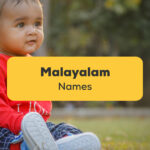Hi, work-from-anywhere friends! Filipino freelancer here, chasing that sweet digital nomad life in these crazy-beautiful islands for the past five years. Think jaw-dropping beaches, locals who’ll treat you like family, and a budget so friendly it’s ridiculous. Today, I’ll tell you all you need to know about being a digital nomad in the Philippines.
We’ll cover everything—visas, finding coworking spaces, scoring reliable WiFi (because sometimes it’s a struggle!), and a taste of Filipino culture. And, of course, I’ll help you learn some Tagalog so you can connect confidently with the locals. Ready to ditch the 9-to-5 and embrace the island life? Let’s go!
Table Of Contents
Philippines Digital Nomad Visa: The Hype Is Real!
Alright, let’s get down to the specifics of this Philippine digital nomad visa everyone’s losing their minds over. The Philippine Bureau of Immigration made the official announcement in May 2023—they were already targeting an early 2024 launch!
This could translate to a full year of working remotely from paradise (with the potential to extend that for another year!) without worrying about local income taxes. Here’s what you need to know:
- Passport: Make sure it’s valid for international travel.
- Proof you’re NOT working for a Filipino company: This visa is all about bringing in income from overseas clients or employers based in countries like the US, Australia, etc.
- Hit that minimum income requirement: While the exact number hasn’t been finalized, the buzz is that you’ll need to earn at least $2,000/month.
- International health insurance that covers the Philippines: A must-have! Consider reputable providers that offer comprehensive coverage.
- Clean criminal record: Keep it squeaky clean—this is a non-negotiable.
While the finer details are still being ironed out, the government is making a big deal about improving internet infrastructure. That means faster connections and less stress for all digital nomads and other remote workers!
Your Visa Options Right Now
While we’re all waiting for those sweet digital nomad visas to drop, don’t worry—there are ways to make your Philippine work-from-paradise dreams happen! Most Western countries get a 30-day visa waiver, and guess what? You can stretch that out for a whopping 36 months. Here’s the lowdown:
- US citizens: 59-day visa on arrival, and you can extend for up to 6 months!
- EU citizens: Start with a 30-day visa on arrival, extendable for another 29 days.
- US green card holders: Double-check your country of origin. If they offer visa-free entry, you’re golden! Otherwise, you’ll need to snag a visa online through the Philippine visa portal and swing by the embassy.
- Canadians, Aussies, Kiwis: 30-day visa on arrival, extendable for another 29 days.
Pro tip: Make your life easier! Have these ready when you arrive:
- Passport: At least 6 months of validity left, please!
- Proof you’re leaving eventually: An onward flight ticket does the trick.
- Proof you’ve got a place to crash: Hotel reservation or Airbnb confirmation works.
- Proof you can afford this adventure: Bank statements or a letter from your boss.
- Any other travel documents they ask for: Better to be over-prepared!
The standard 30-day tourist visa fee is $30. Trust me, having your paperwork sorted makes those airport lines way less stressful.

Digital Nomad In The Philippines Top Destinations
Now, let’s talk about the fun part—where to set up as a digital nomad in the Philippines! Whether you’re a city slicker or a beach bum, there’s a perfect spot for you. Take note: As of April 2024, 1 USD = 57PHP.
Manila: The Urban Jungle
If constant motion and a never-ending supply of things to do is your thing, Manila’s your scene. Think crazy-fun nightlife, giant malls, and a whole bunch of coworking spaces popping up.
Check out The Office Project (₱600/day), Acceler8 (₱500/day), or Common Ground Rockwell (prices vary, but it’s a bit fancier!). Personally, I love Manila’s convenience—everything from awesome international food to concerts is right there.
Bonus: You’re perfectly positioned for weekend adventures to nearby provinces!
Cebu: City Meets Island Vibes
Want that city-meets-beach balance? Cebu’s got it. Coworking spots like IiOffice Cebu (₱300/day) are easy to find, and after work, the ocean’s calling your name. Cafes like Coffee Bay in IT Park (24/7!) are perfect if you need a change of scenery.
But here’s my favorite part: Hop on a ferry, and within hours, you’re surrounded by Bohol’s Chocolate Hills or diving with thresher sharks on Malapascua. That’s the work-life balance dreams are made of!
Davao: Safety And Snacks
Davao’s worth checking out if you like a chill city with excellent food. It’s known for being super safe, and the digital nomad scene is growing.
Score a spot at DevHub Davao (₱400/day) or the budget-friendly RainMakers (₱150/day), then hit the streets for some seriously good eats. Seafood? Check. Wild fruits like durian (if you dare!)? Check. It’s got that relaxed vibe that’s perfect if the big-city frenzy isn’t your thing.
Siargao: Surf’s Up, Laptop’s Out
Siargao, the country’s surfing capital, is one of the best destinations for a digital nomad in the Philippines. It’s perfect if you live in flip-flops and dream of epic waves!
Cloud 9 is legendary, the beaches are ridiculously gorgeous, and it’s fast becoming a digital nomad hub. Coworking spots like Lokal Siargao (₱350/day) or Bayud Boutique Hostel & Coworking (₱300/day) are literally steps from the sand.
I spent a few days in Siargao back in August 2022, and let me tell you—catching a sunset after work or squeezing in a surf session during lunch break is pure magic.
Palawan: Nature’s Wonderland
Palawan is famous for its postcard-perfect beaches, crazy limestone cliffs, and hidden underground rivers. Coworking spaces are fewer, but El Nido’s got reliable WiFi spots like Outpost Beach Hostel (₱250/day) or Spin Designer Hostel (₱300/day).
My top tip? First, travel to El Nido and check out those places I’ve mentioned. Then, take a day off and visit Puerto Princesa Underground River. It’s a UNESCO World Heritage Site for a reason—seriously mind-blowing.

Coworking Spaces And Internet Connectivity
Let’s talk about the elephant in the room—internet connectivity. It’s a mixed bag—sometimes blazing fast, sometimes making you want to hurl your laptop into the sea. But fear not, I’ve got your back! Here’s the strategy:
Data Is Your Best Friend
Get yourself a good mobile data subscription! Smart, Globe, and DITO are the main telco players, and they’ve got affordable options. I personally subscribe to Smart’s ALL DATA 299 plan—20GB for a whole month? More than what I need.
Choose Your Stay Wisely
Always, always check for “high-speed WiFi” in the listing and scope out reviews from other digital nomads. Places popular with remote workers tend to have reliable internet.
A few of my faves for a decent internet connection include Z Hostel in Manila (from ₱500/night), The Bunker House in Cebu (from ₱800/night), and Paglaom Hostel in Siargao (from ₱500/night).
Coworking To The Rescue!
When you need a guaranteed good connection and a work-focused vibe, coworking spaces are lifesavers. You may want to backread and check all my recommended coworking places for the best internet speeds.
Pro-Tip: Ask about WiFi speeds before booking anything, and don’t be afraid to run a speed test when you arrive. Your sanity will thank you!
Cost Of Living For Digital Nomads And Remote Workers
One of the sweetest things about being a digital nomad in the Philippines is that budget stretch! Compared to places like the US or Europe, your hard-earned cash lasts a LOT longer here. Here’s the lowdown:
Home Sweet (Affordable) Home
In cities like Manila or Cebu, a comfortable, modern-ish apartment will run you about ₱15,000-₱20,000 a month. Want even more bang for your buck? Head to smaller towns or islands in the Philippines like Calapan City in Oriental Mindoro (I live here!)—rents as low as ₱3,000-₱8,000 a month are totally doable.
Feasting On A Budget
Get ready to fall in love with Filipino cuisine! A delicious meal at a local karinderya (eatery) rarely costs more than ₱100-₱300.
Street food is even more of a bargain—think sizzling pork skewers, savory rice bowls, and fresh mango slices, all for around ₱50-₱100. Must-tries include adobo (the ultimate comfort food!), sinigang (a sour soup), and lechon (crispy, juicy roasted pig).
Everyday Costs
Being a digital nomad in the Philippines will cost you less than those office guys and gals waking up at 4 am just to get to work before 8 am. So, just to give you an idea, here’s what will cost you:
| Expense | Cost In PHP | Cost In USD |
|---|---|---|
| Accommodation | ₱15,000-₱20,000/month | $280-$370/month |
| Local Meal | ₱100-₱350 | $2-$6 |
| Street Food | ₱50-₱110 | $1-$2 |
| Coffee | ₱100-₱170 | $2-$3 |
| Short Taxi Ride | ₱100-₱230 | $2-$4 |
| Public Transport (per ride) | ₱10-₱30 | $0.20-$0.60 |
| Local Beer | ₱50-₱110 | $1-$2 |
| Water | ₱20-₱57 | $0.40-$1 |
Obviously, how much you spend depends on your lifestyle and where you choose to live. But as someone who’s traveled all over Southeast Asia, been to Europe, the US, and everywhere in between, I believe the Philippines is seriously good for those on a budget. You can live comfortably and have unique experiences without spending a fortune.
Culture And Language
Another sweet part of the digital nomad life in the Philippines is getting to know the amazing Filipino culture. Seriously, Filipino hospitality is known worldwide for being incredibly friendly, and you’ll feel right at home in no time. Bonus: English is everywhere (it’s one of the official languages alongside Filipino!), so you won’t get lost in translation.
That being said, learning a few Tagalog phrases can go a long way in building stronger connections with locals. Here are some useful ones to get you started:
Want to learn more Tagalog and become a Philippines pro? The Ling app makes it easy and fun! Think of quick lessons, cool cultural tips, and actually learning to speak the language. Best part? You can use the first eight lessons for FREE—just search for Ling on Google Play or the App Store!
Challenges And Safety
Like anywhere in the world, the Philippines isn’t without its challenges. Let’s talk about a few things to keep in mind so you can plan accordingly:
- Traffic Jams: I’m not gonna lie—traffic in big cities like Manila or Cebu can be brutal. Rush hour gridlock is no joke, so always add some extra time to get around. My strategy? Embrace working from cafes near my place to avoid those crazy commutes!
- Pollution: Air quality isn’t always great in major cities. If you’re sensitive, investing in a good face mask (N95 or KN95) or even an air purifier for your room is a smart move.
- Safety First: Overall, the Philippines is pretty safe for travelers and digital nomads. But like anywhere, common sense is key. Avoid walking alone at night in areas that feel unsafe, keep a close eye on your stuff in crowded places (especially on buses and jeepneys), and be aware that pickpocketing can happen in touristy spots.
- Typhoons: The Philippines gets its fair share of typhoons (mainly between September and February) and the occasional earthquake. It’s always smart to keep tabs on the weather and have a basic emergency plan just in case.

Essential Items For Remote Workers In The Philippines
Of course, being a digital nomad in the Philippines requires a bit of gear prep aside from the usual. Here’s the stuff you won’t want to leave home without:
- Universal Adapter: Philippine outlets are a bit of a wildcard, so a universal adapter is useful. Trust me, the struggle is real without one!
- Portable WiFi or SIM Card: Because hotel WiFi isn’t always reliable, a pocket WiFi device (like Smart Bro or Globe MyFi) or a local SIM card gives you that sweet, sweet internet freedom.
- Power Bank: There are too many power interruptions in the Philippines, especially during the summer months (March to early June).
- Light Clothes: As a tropical country, expect temps from 27°C to 40°C (80°F to 104°F), so pack accordingly.
Online Digital Nomad Community
In my experience, the digital nomad life can get a little lonely sometimes. That’s why tapping into online communities is a must! Think of Facebook groups like “Digital Nomads Philippines” (7,000+ members!) and “Cebu Digital Nomads” (900+ strong) as your virtual hangouts.
These aren’t just for boring logistics questions (although they’re great for that, too). We’re talking about finding people who’ll recommend their favorite cafe with rock-solid WiFi, warn you away from sketchy landlords, or organize exciting weekend meetups.
Ready To Take The Leap?
Oof, that’s a lot of info, right? But hey, you’re now ready to walk away from the cubicle and embrace that digital nomad in the Philippines life! And I don’t blame you! With our stunning scenery, welcoming locals, budget-friendly living, and growing digital nomad scene, it’s a fantastic choice to live in the Philippines.
Sure, there are challenges along the way, but the adventure is totally worth it. So pack your laptop, brush up on your Tagalog language skills, and get ready to experience the Philippines like a true digital nomad!



































































